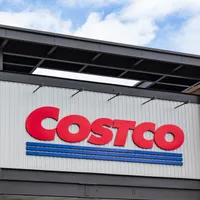Surprising Ways to Find Deals on Cars Despite Tariffs
Looking for a new car? Tariffs will make good deals harder to find, so use these expert tricks to get a lower purchase price and keep long-term costs down.







It’s always a good time to get a good deal. But as tariffs take effect on some imported goods — and as the Trump administration continues to negotiate tariffs with other countries — you may be especially interested right now in how you can save money while you shop.
Kiplinger Personal Finance Magazine has taken the time to assess how you can find deals this year on investments, groceries, electronics, clothing, cars and travel, as well as how to take advantage of credit card perks — with a special emphasis on finding deals for products and services most prone to rising prices as the trade war evolves. In this article, we look at deals on cars. (See below to find links to our other articles about deals.)
The 25% tariffs on imported cars and car parts that went into effect in the spring have significantly affected the U.S. auto industry, prompting automakers to adjust pricing and production strategies.
From just $107.88 $24.99 for Kiplinger Personal Finance
Become a smarter, better informed investor. Subscribe from just $107.88 $24.99, plus get up to 4 Special Issues

Sign up for Kiplinger’s Free Newsletters
Profit and prosper with the best of expert advice on investing, taxes, retirement, personal finance and more - straight to your e-mail.
Profit and prosper with the best of expert advice - straight to your e-mail.
“The bottom line for consumers is they’re going to have to do a lot of extra research,” says Brian Moody, senior editor for Kelley Blue Book (KBB), an automotive vehicle valuation and research company.
Not all vehicles will be affected equally, and even cars built in the U.S. may cost more, so you’ll want to research prices thoroughly to avoid surprises, he says.
If you’re shopping for a car, consider these strategies to reduce your costs, both up front and over the long term.
Leverage your memberships
Members of wholesale retailers Costco and Sam’s Club can take advantage of their car-buying programs.
The Costco Auto Program helps members find deals on new and used cars, collaborating with dealerships to prearrange special pricing for members.
Members recently also had access to special promotions and incentives, such as up to $2,000 off on select new Audi models or discounts on electric vehicles from brands such as Chevrolet and Volvo.
Additionally, Costco provides discounts of 15% (up to $500 per visit) on parts, service and accessories. Costco’s annual membership fees start at $65 per year.
Sam’s Club also offers prenegotiated pricing on new and used cars. The average savings for new cars is about $3,400 off the manufacturer’s suggested retail price, according to TrueCar, an online automotive marketplace.
Members can also get discounts on tires and tire installation. Sam’s Club memberships start at $50 per year.
Stack Social is offering a Gold Star Membership + $20 Digital Shop Card for the price of a $65 Gold Star membership. It is also offering an Executive Gold Star Membership + $40 Shop Card for the price of a $130 Executive Gold Star membership.
Factor in insurance and other long-term costs
Some vehicles are more expensive to insure than others. More-affordable vehicles, such as the Toyota Corolla, Toyota Camry and Honda Accord, will usually have the lowest insurance premiums, Moody says.
Buying a car that’s relatively inexpensive to insure can keep your long-term ownership costs down.
Comparison-shop insurance policies, too. Most major insurers offer free quote calculators on their websites. Or use a site such as TheZebra.com to compare quotes from multiple insurers.
Think about other long-term costs as well. Buying a fuel-efficient vehicle can significantly lower the costs of car ownership over time.
At www.fueleconomy.gov, click on “Compare Side-by-Side” to use a tool that allows you to select various vehicle models and compare their fuel economy.
For each model, you’ll also see estimated annual fuel costs and how much you’ll save (or how much more you’ll spend) on those costs over five years compared with the average new vehicle.
Note: This item first appeared in Kiplinger Personal Finance Magazine, a monthly, trustworthy source of advice and guidance. Subscribe to help you make more money and keep more of the money you make here.
Related content
- Valuable (and Fun) Things You Can Get for Free
- Smart Ways to Save Money at Museums
- How to Find Deals on Travel in 2025
- Don't Miss Out on These Four Credit Card Benefits
- Three Ways to Find Deals in Your Investments This Year
- Three Ways to Spend Less on Groceries This Year
- How to Find Deals on Electronics Amid Tariffs
- Strategies to Spend Less on Clothing and Online Shopping in 2025
Profit and prosper with the best of Kiplinger's advice on investing, taxes, retirement, personal finance and much more. Delivered daily. Enter your email in the box and click Sign Me Up.

Nellie joined Kiplinger in August 2011 after a seven-year stint in Hong Kong. There, she worked for the Wall Street Journal Asia, where as lifestyle editor, she launched and edited Scene Asia, an online guide to food, wine, entertainment and the arts in Asia. Prior to that, she was an editor at Weekend Journal, the Friday lifestyle section of the Wall Street Journal Asia. Kiplinger isn't Nellie's first foray into personal finance: She has also worked at SmartMoney (rising from fact-checker to senior writer), and she was a senior editor at Money.
-
 The $183,000 RMD Shock: Why Roth Conversions Can Be Risky
The $183,000 RMD Shock: Why Roth Conversions Can Be RiskyConverting retirement funds to a Roth is a smart strategy for many, but the older you are, the less time you have to recover the tax bite from the conversion.
-
 A Financial Pro Breaks Retirement Planning Into 5 Easy Pieces
A Financial Pro Breaks Retirement Planning Into 5 Easy PiecesThis retirement plan focuses on five key areas — income generation, tax management, asset withdrawals, planning for big expenses and health care, and legacy.
-
 Financial To-Dos to Finish 2025 Strong and Start 2026 Stronger
Financial To-Dos to Finish 2025 Strong and Start 2026 StrongerDon't overlook these important year-end check-ins. Missed opportunities and avoidable mistakes could end up costing you if you're not paying attention.
-
 4 Financial To-Dos to Finish 2025 Strong and Start 2026 on Solid Ground
4 Financial To-Dos to Finish 2025 Strong and Start 2026 on Solid GroundDon't overlook these important year-end check-ins. Missed opportunities and avoidable mistakes could end up costing you if you're not paying attention.
-
 9 Types of Insurance You Probably Don't Need
9 Types of Insurance You Probably Don't NeedFinancial Planning If you're paying for these types of insurance, you may be wasting your money. Here's what you need to know.
-
 I'm an Insurance Pro: It's Time to Prepare for Natural Disasters Like They Could Happen to You
I'm an Insurance Pro: It's Time to Prepare for Natural Disasters Like They Could Happen to YouYou can no longer have the mindset that "that won't happen here." Because it absolutely could. As we head into 2026, consider making a disaster plan.
-
 The Future of Philanthropy Is Female: How Women Will Lead a New Era in Charitable Giving
The Future of Philanthropy Is Female: How Women Will Lead a New Era in Charitable GivingWomen will soon be in charge of trillions in charitable capital, through divorce, inheritance and their own investments. Here's how to use your share for good.
-
 The Retirement Donor's Checklist: Key Deadlines by Gift Type
The Retirement Donor's Checklist: Key Deadlines by Gift TypeRetirees have some charitable contribution options that can help avoid spikes in income from RMDS and capital gains.
-
 The November CPI Report Is Out. Here's What It Means for Rising Prices
The November CPI Report Is Out. Here's What It Means for Rising PricesThe November CPI report came in lighter than expected, but the delayed data give an incomplete picture of inflation, say economists.
-
 Online Banks Still Lead on Rates, But Is Switching Worth it Now?
Online Banks Still Lead on Rates, But Is Switching Worth it Now?As interest rates trend down, online banks keep an edge on yields, but service, access and flexibility still matter. Here’s how the trade-offs stack up.
-
 I'm 73, Retired, and Dreading Winter, But I Can't Afford to Be a Snowbird. Help!
I'm 73, Retired, and Dreading Winter, But I Can't Afford to Be a Snowbird. Help!How can a snowbird wannabe warm up without the expense? We asked professional wealth planners for advice.
